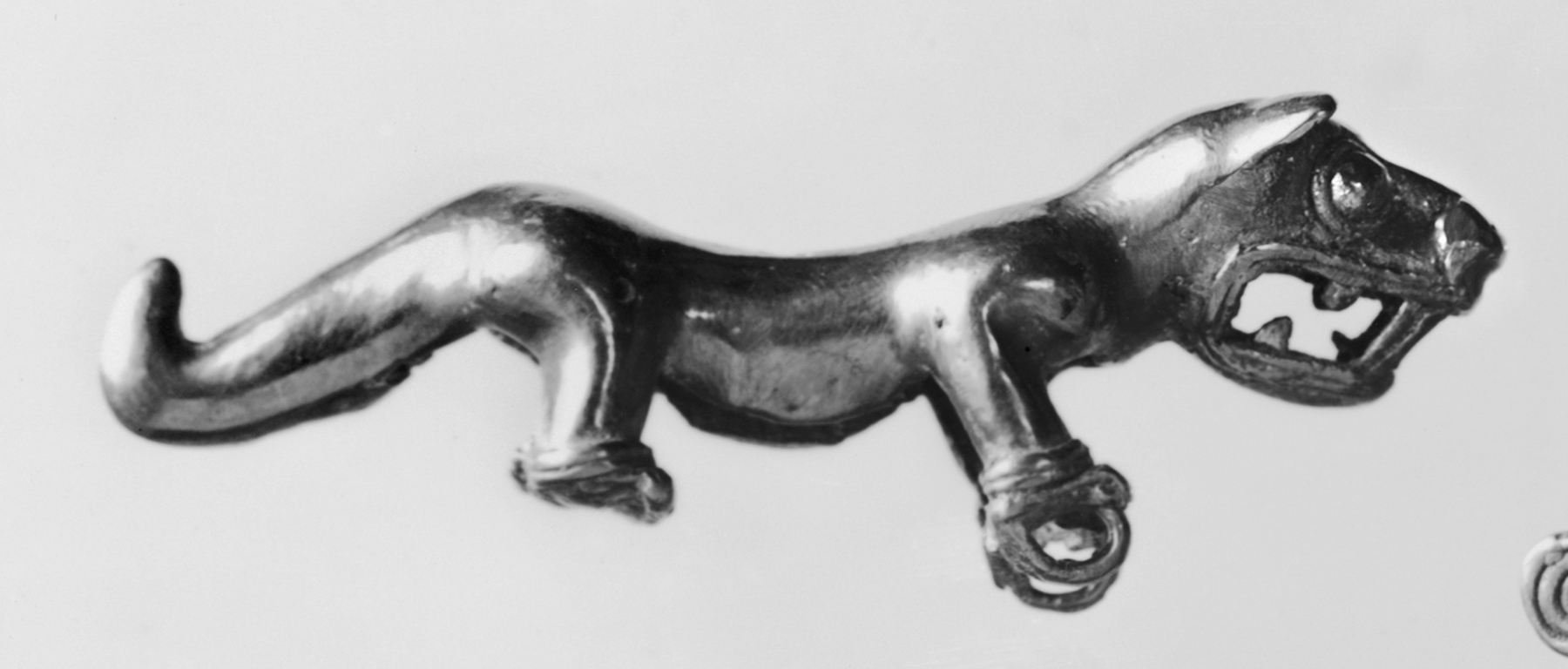Jaguar Pendant
(Ancient Americas )
This pendant represents a jaguar, an animal with which a warrior would have wanted to be associated. The animal's mouth is open to display its dangerous teeth, and the end of its characteristic tail is curled upwards. The front feet have loops for suspension.
Raw and refined gold was as valuable as it was symbolic to the people of Precolombian Panama. Because of its reflective nature, which mirrored the shining sun, working with and wearing gold signaled a characteristic of the divine. In order to create complex and beautiful gold pieces, many goldsmiths adapted the lost wax method of metallurgy. This technique—probably initially developed in the Northwest region of Colombia—used wax and clay to create a mold, enabling molten metal to be poured into the cast and melt the surrounding parts to produce exquisite and thin ornamentation.
Pendants were worn by men around the neck on ceremonial occasions. Columbus noted that the inhabitants of Panama who came to greet him wore gold pendants in the shape of eagles. This piece could have been created in Columbus's time or during the previous 600 years.
Provenance
Provenance (from the French provenir, 'to come from/forth') is the chronology of the ownership, custody, or location of a historical object. Learn more about provenance at the Walters.
[Found at a graveyard between Divalá (a village on the outskirts of settled Panama, thirty miles west of David in the province of Chiriqui) and Costa Rica, Spring 1909]; Tiffany & Co. New York, 1910, by purchase [from "Indians," see December 29, 1910 correspondance from Tiffany & Co. to Henry Walters]; Henry Walters, Baltimore, 1911, by purchase; Walters Art Museum, 1931, by bequest.
Geographies
Panama (Veraguas-Gran Chiriquí) (Place of Origin)
Measurements
1 3/8 x 3 9/16 in. (3.5 x 9 cm)
Credit Line
Acquired by Henry Walters, 1911
Location in Museum
Accession Number
In libraries, galleries, museums, and archives, an accession number is a unique identifier assigned to each object in the collection.
In libraries, galleries, museums, and archives, an accession number is a unique identifier assigned to each object in the collection.
57.265


